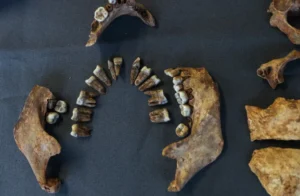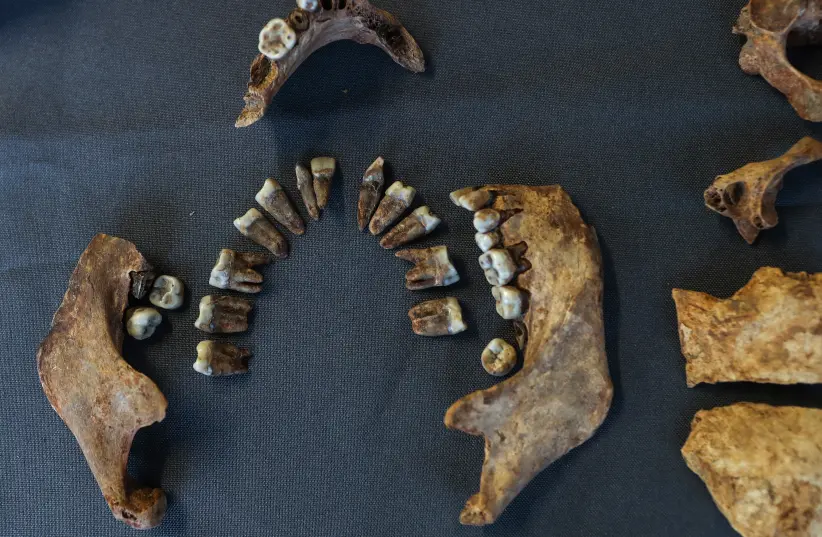Out of 37 samples of bone-made jewelry tested, 12 were found to be made of human bone, a third of all tested remains.

Burial remains dating back to 8,200 years ago from an island in modern-day Russia’s Lake Onega revealed human bones were used as raw material to make jewelry.
This was discovered following a reexamination of the remains by a group of University of Helsinki researchers, 80 years after the initial examination of the findings, which were obtained during an archaeological excavation of Yuzhniy Oleniy Ostrov island in the 1930s. Their findings were published in the Journal of Archaeological Science in June.
The findings, which consisted of both human remains and various other objects, were sent to a lab at the University of York’s BioArCh research facility to be analyzed using the zooarchaeology by mass spectrometry (ZooMS) technique. ZooMS identified species using peptides or amino acids extracted from proteins contained in extremely small samples of bone.
Out of 37 samples of bone-made jewelry sent to the University of York, 12 were found to be made of human bone. While most samples were made primarily from bones of elks and bovines, almost every third sample tested was made from human bones.
The pendants were described as “flakes of broken long bones of varying sized,” usually featuring one or two chiseled cuts.
The researchers did note that the use of human bones as a raw material for objects is not exclusive to the Russian island. According to them, it is also a known phenomenon in archaeological sites in Asia and South America.

“Using animal and human bones together in the same ornament or clothing may have symbolized the ability of humans to transform into animals in their minds. It may indicate the intertwining of animals and humans in the Stone Age worldview.”
Prof. Kristiina Mannermaa
Why would humans wear human bones?
The researchers suggested theories for the use of human bones in pendants and other objects. The first theory hypothesizes that ancient humans made objects out of the bones of slain enemies or sometimes kept them on display.
Another theory suggests that the bones may have belonged to family members or tribe leaders, worn out of respect.
However, cannibalism remains associated with the use of human bones in archaeological findings. Often, traces of meat removal can be found on the bones.
While cannibalism might have been more common in the Stone Age, there is “no reason to suspect” cannibalism was involved in the Lake Onega remains, project leader, Prof. Kristiina Mannermaa said.
“The surface of the bone pendants we investigated is so worn out that you cannot make out any potential cut mark,” Mannermaa explained. “We have no reason to suspect cannibalism on the basis of the discoveries in Yuzhniy Oleniy Ostrov.”
The intertwining of animals and humans
According to Mannermaa, it is particularly interesting that objects made from human bones were indistinguishable from those made from animal remains.
“Using animal and human bones together in the same ornament or clothing may have symbolized the ability of humans to transform into animals in their minds,” the researcher noted. “It may indicate the intertwining of animals and humans in the Stone Age worldview.”
In the previous study conducted on the remains, some of the bone pendants discovered were labeled as made of animal bones.

